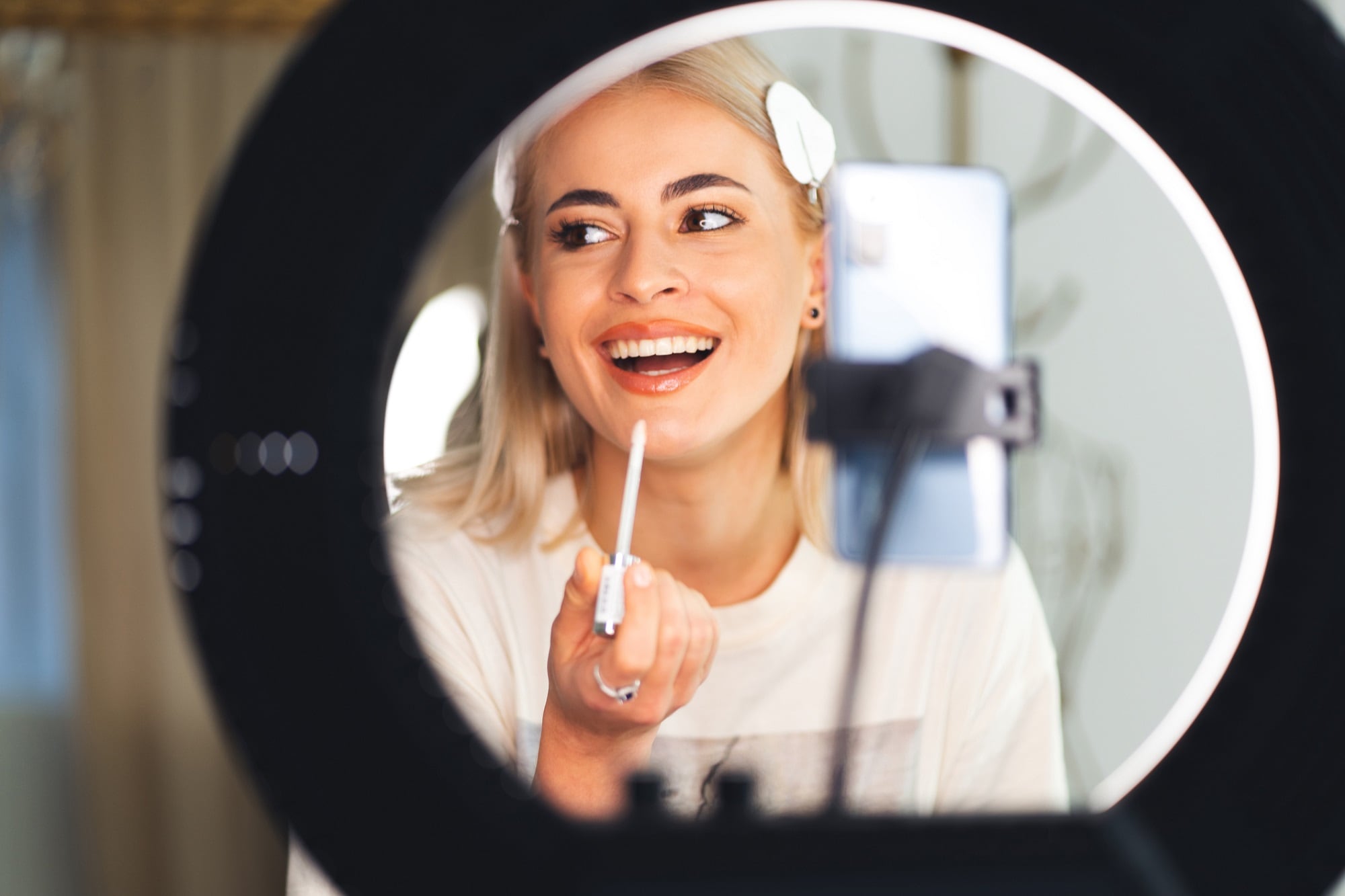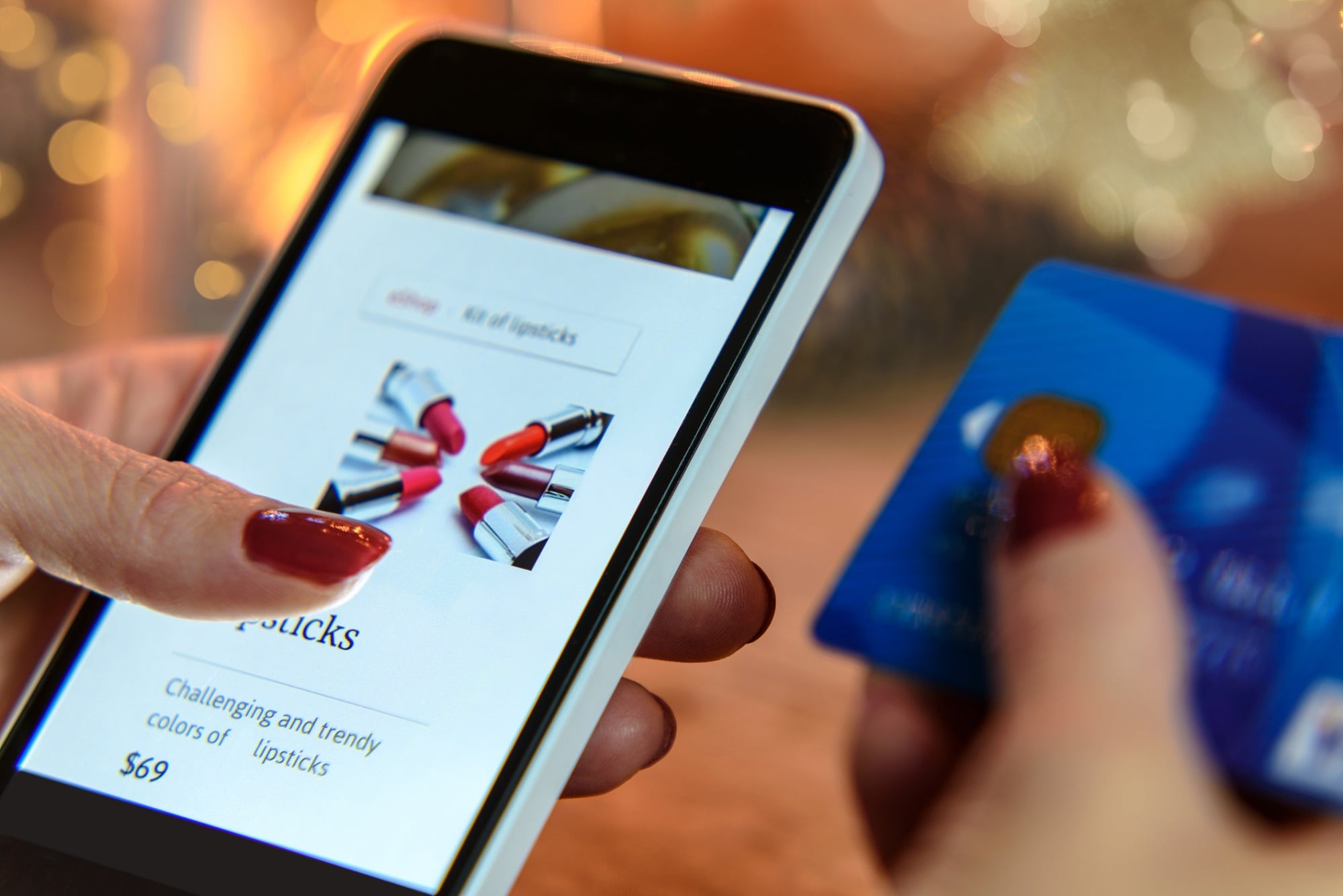In recent years, TikTok has solidified its position as a powerhouse in the beauty industry, driving trends, shaping consumer behavior, and significantly influencing sales. From viral campaigns that boost product visibility to the emergence of new beauty categories, TikTok's impact on the cosmetics and personal care market is undeniable.
To better understand these dynamics, CosmeticsDesign spoke with Aditya Kaushik, Analyst at Coresight Research. In this Q&A, Kaushik sheds light on the most successful TikTok campaigns, the strategies manufacturers should adopt to enhance brand visibility, and the evolving consumer preferences that are shaping the future of beauty.
CDU: What specific TikTok campaigns have driven significant beauty product sales recently?
Aditya Kaushik (AK): TikTok has emerged as the undisputed winner, due to its bite-sized videos, engaging challenges and hashtags, and a community built around raw, unfiltered content.
There has been a trending campaign #TikTokMadeMeBuyIt trend. To participate, users share products or items they discovered and purchased based on recommendations they came across on TikTok videos.
This trend has become a game-changer for the beauty industry as these products rely heavily on visual aesthetics. TikTok's video-centric platform also allows for detailed demonstrations and before-and-after transformations which help improve the brand perception and visibility of beauty brands.
CDU: How can manufacturers leverage TikTok to enhance brand visibility and engagement?
AK: Manufacturers can leverage it by influencer partnerships, wherein they can collaborate with popular TikTok influencers who align with their brand's values and target audience. Influencers can create engaging content that showcases the products in authentic and creative ways, reaching a wide audience of potential customers.
Also, educational and how-to content strategy can be used to create informative and instructional videos demonstrating how to use products effectively. Another strategy could be cross-promotion and collaboration wherein they can partner with other brands or complementary businesses for cross-promotion on TikTok.
This expands the reach to new audiences who may share similar interests or demographics. User-Generated Content Campaigns can also be another strategy that can be used by manufacturers wherein TikTok users can be encouraged to create and share content featuring their products and they can launch hashtag challenges or contests that prompt users to showcase their creativity while using those products.
This not only generates buzz but also builds a community around the brand.
CDU: Which beauty product categories have seen the highest growth in online sales, and why?
AK: Online sales data is not available by category but total beauty sales for 2023 is mentioned below:
According to Circana data, US prestige beauty industry dollar sales grew by 14%, year over year, to reach $31.7 billion in 2023, while mass market beauty sales experienced a year-over-year dollar increase of 6%.
Makeup posted the fastest growing dollar sales in the prestige category. Prestige makeup sales grew about 15%, compared to about 6% in mass. Makeup was also one of only two mass sectors that grew based on unit sales (the other was skin care).
Prestige skin care grew about 14%, compared to about 11% in the mass category. Skin care was the fastest-growing category in prestige beauty based on units sold, per Circana. Skin care was also one of only two mass sectors that grew based on unit sales (the other was makeup).
Notably, prestige skin care is gaining market share among 45-54-year-olds with a household size of four that includes children under 18 years old. Circana interprets this as a sign of increased interest in the category among teens and tweens.
Prestige fragrance grew about 12%, compared to about 4% in mass. Notably, per Circana, unit sales for mini women’s fragrances grew at five times the rate of other sizes, while the size of the body spray market nearly tripled since 2022.
Prestige hair sales grew about 14% in 2023, compared to 6% in mass. Hair is the only beauty category that captures the majority of sales online; in 2023, e-commerce accounted for 52% of sales volume.
CDU: What demographic shifts are influencing current beauty product purchasing habits?
AK: Millennials and Gen Z are significant drivers of beauty product trends. They prioritize authenticity, inclusivity, and sustainability in their purchasing decisions.
These generations are digital natives, heavily influenced by social media, influencers, and online reviews when choosing beauty products. And also, there is a growing demand for beauty products that cater to diverse skin tones, hair textures, and gender identities. Consumers are seeking products that are inclusive and represent a wide range of ethnicities and identities.
And for aging population, there is a growing demand for anti-aging skin care products and treatments that address specific age-related concerns such as wrinkles, fine lines, and skin elasticity. Brands targeting this demographic are focusing on products that promote youthful skin and overall skin health.
CDU: How should manufacturers adapt their distribution strategies to align with successful retailers like Ulta and Sephora?
AK: Manufacturers should keep up with new developments in new ingredients, products, styles, and even entire beauty regimes that quickly gain popularity. The onus then is on suppliers to update their product offerings in order to maintain (and increase) sales and credibility amidst competitors who also contend with the same challenges.
Beauty products have a limited shelf life, which means efficient distribution strategies are a vital part of beauty product inventory management, so they can be sold within their viable time frame. Distributors can help suppliers and manufacturers address these challenges in their capacity as industry experts.
Through close collaborations, distributors can facilitate swift process changes that help the industry integrate new ingredients and launch products aligned with current market preferences. They also offer practical solutions for inventory management and demand forecasting to avoid overstocking and subsequent losses.
Another opportunity for growth for beauty brands is through collaborations. The beauty industry is multifaceted, with immense scope for partnerships with other brands, which can be leveraged with the help of distributors. Collaborating may also give access to more resources (novel formulations, ingredients, and products) and expose the companies to new innovations in the industry.
CDU: What adjustments should manufacturers consider in their pricing strategies?
AK: Premium pricing is a strategy of setting high prices for products that are perceived as high-quality, luxurious, or exclusive. Premium pricing can create a sense of prestige, status, and exclusivity for the brand and the consumer.
Value-based pricing is a strategy of setting prices based on the perceived value or benefit that the product provides to the customer, rather than the cost of production or the market average. Value-based pricing can help differentiate a product from its competitors and increase customer loyalty and satisfaction.
Some examples of leading brands’ pricing strategies:
L'Oréal uses a multi-brand strategy to cover the entire spectrum of the beauty market, from mass to luxury, and from skincare to makeup. L'Oréal's pricing strategy is based on segmentation and differentiation, meaning that each brand has a distinct identity, target audience, and value proposition, and is priced accordingly.
For example, L'Oréal Paris is a mass-market brand that offers affordable and accessible products for a wide range of consumers, while Lancôme is a premium brand that offers high-end and exclusive products for a more sophisticated and affluent clientele. L'Oréal's pricing strategy allows it to maximize its market share and profitability by catering to different consumer needs, preferences, and budgets, and by creating a clear distinction between its brands.
MAC Cosmetics uses a premium pricing strategy to position itself as a high-quality and aspirational brand that appeals to both professionals and enthusiasts. MAC Cosmetics' pricing strategy is based on value and exclusivity, meaning that its products are priced higher than the average market price, but offer superior performance, variety, and creativity.
MAC Cosmetics also leverages its limited-edition collections and celebrity endorsements to create a sense of urgency and desirability among its customers, and to justify its premium prices.
CDU: According to your latest survey, what are the top factors driving consumer loyalty to specific beauty brands?
AK: According to our survey, top factors include sense of value (more than half of respondents chose that), sense of caring (one-third respondents) and sense of luxury (one quarter).
CDU: What upcoming beauty trends should manufacturers prepare for in the next 6-12 months?
AK: Continued Emphasis On Natural And Organic Ingredients: According to the Environmental Working Group, More than 65% of consumers are looking for environmentally friendly brands, and 55% are willing to pay more for sustainable products. Ingredients are a big part of sustainability for consumers. Walmart recently launched a clean beauty shop that offers 900 products that are free from ingredients on the store’s “Made Without List” like formaldehyde and PFAS.
Personalization with AI And AR: Personalization directly influences buying behavior across the customer life cycle. Haircare company Prose invites customers to take a 25-question quiz and then analyzes over 80 factors to create custom formulas for shampoo, conditioner, and other hair care products.
The tech company Revieve has created several AI/AR-powered interactive modules as part of their Digital Health-Beauty-Wellness Platform. This covers customers interested in skincare, makeup, sun protection, and nutrition. Beauty retailers/brands like Murad, Living Proof, Ulta Beauty, and Schwan Cosmetics have recently partnered with Revieve to provide true-to-life try-on opportunities and personalized recommendations.
Other beauty brands are combining tech solutions with the latest skincare science to offer personalized products. For instance, Pure Culture Beauty offers an at-home skin test that measures skin type, skin condition, and the health of the skin barrier. Customers also answer a series of questions about their concerns, lifestyle, and environment.
Beauty Sales and Brand Engagement On TikTok: Our survey also suggests that TikTok has seen a significant jump for beauty sales and is most likely to increase further in 2024 and beyond. Truly Beauty is one brand that’s recently leveraged TikTok to build their DTC skincare business.
TikTok has also been a key driver in another beauty trend: male grooming. The hashtag “#mensskincare” currently has over 1.9 million views on TikTok.





